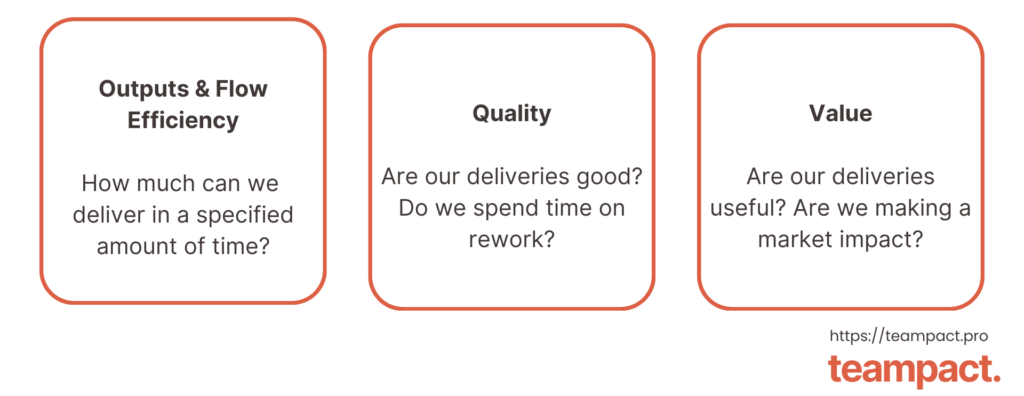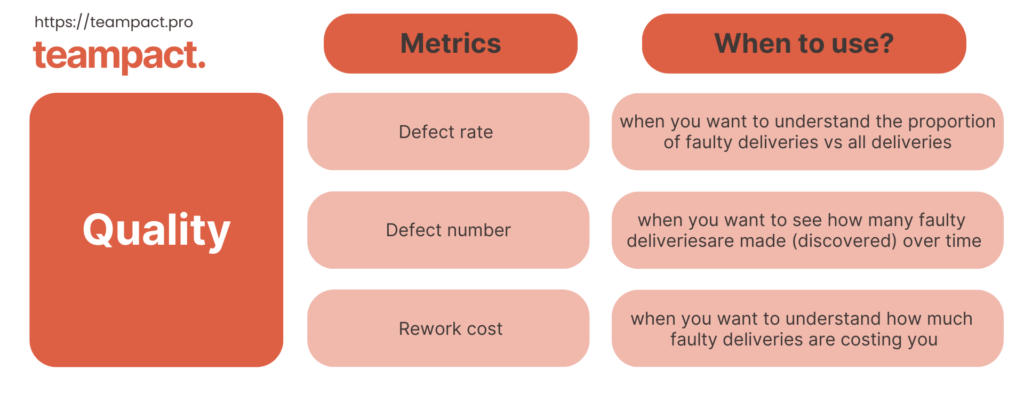If your team implemented some ways of measuring productivity, you are more informed than most teams are as it is. But when looking at productivity from the lens of effectiveness, this is still not enough to give you the full context. One might argue that productivity, quality and value measurement are two separate topics – which might be a good theoretical classification. When it comes to practical use, it does not matter as much though.
This article gives you a basic set of metrics to choose from that will inform your team’s performance and effectiveness while providing a fuller context.
3 metric areas for comprehensive team effectiveness assessment
The way a complete, but still lean and concise team effectiveness metric collections are built should refer to three areas:
- Outputs and Flow Efficiency: generally measuring how efficient your delivery is
- Quality: measures pertaining to how well the work is done
- Customer Recognised Value: measuring what value does the work your team does generates
All 3 of the measure areas are a subset of a bigger picture of how your team is performing, looking at your work more holistically. All 3 are detailed below with practical guidance on when to use each of the measures.
Output and Flow Efficiency measurement
Measuring the outputs and flow efficiency feels the most intuitive to most leaders when trying to assess team effectiveness. It is necessary to start managing effectiveness, so the intuition is right. These measures usually come from traditional project management, lean and agile frameworks like Scrum.
To build understanding of how swiftly you can produce outputs, tackle the tasks at hand and how efficient your process is, you might want to pick some of the measures below.
Quality measurement
Customer Recognised Value measurement
The list of metrics in each of the types is not exhaustive. When thinking about what to measure, always think about the problem or phenomenon you want to understand, monitor, influence or fix.
Tip!
Designing a sensible metric framework right for your team
- The less, the merrier: keeping your dashboards compact makes them more usable, avoiding cognitive overload
- Only measure what you plan to work on: while keeping a small set of basic metrics, anything that lands on your dashboards should have an actionable purpose
- Add and remove metrics when it makes sense to: if you are measuring to diagnose or solve a problem, stop measuring when the solution stabilises the metric level
- Know exactly what you want to do with the newly found knowledge: be cognizant while choosing what to measure and what will be done when you see certain metric levels





